#Pleistocene Europe
Explore tagged Tumblr posts
Text

Smou

Strurni

Karpina

Eira
#the wurmian chronices#ice age europe#pleistocene#neanderthal#paleolithic#homo neanderthalensis#ice age#pleistocene europe#cro magnon
0 notes
Text

Palaeoloxodon antiquus - Forest elephant prehistoric canvas wall art
This is a European forest elephant that lived in Europe during the Pleistocene. Along with the forest rhinoceros, "Merka" was one of the main ecosystem engineers in Europe.

orest elephant prehistoric canvas wall art. Extinct Animal large prints. Excellent gifts for parents, couples gifts, paleontology gift. With this fine art you'll have exclusive office art, kitchen decor, bathroom wall art.
Also, these paintings will help you in the design of a scientific gallery, museum exposition, educational presentation, scientific work, publication of a scientific article in a magazine.
You can choose these images for your brand logo, product branding.
This exclusive and unrepeatable painting can be purchased here:
#European forest elephant#Pleistocene Europe#forest rhinoceros#Merka#ecosystem engineers#Forest elephant#prehistoric canvas wall art#Extinct Animal#large prints#Excellent gifts#parents gifts#couples gifts#paleontology gift#fine art#exclusive office art#kitchen decor#bathroom wall art#design paintings#scientific gallery#museum exposition#educational presentation#scientific work#scientific publication#scientific article magazine#brand logo#product branding#Stephanorhinus kirchbergensis#woolly rhinoceros#popular animal#big five ice age
1 note
·
View note
Text
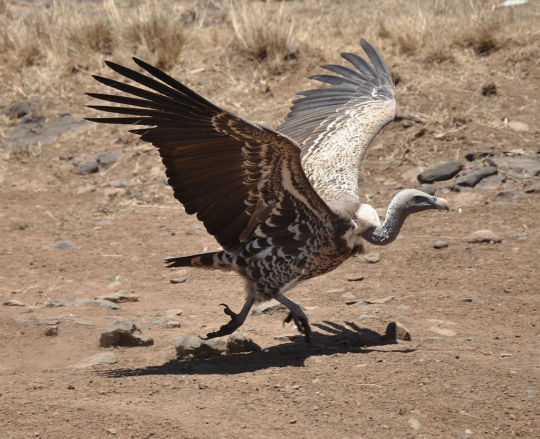
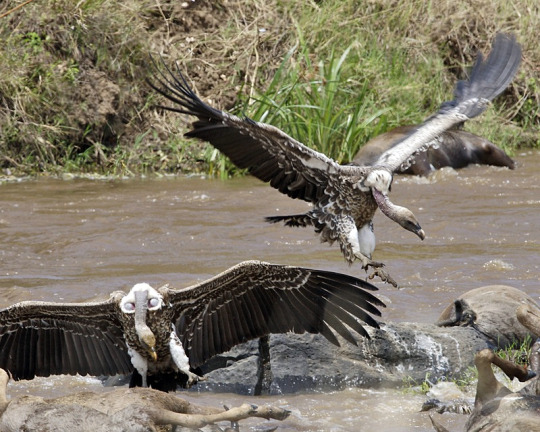
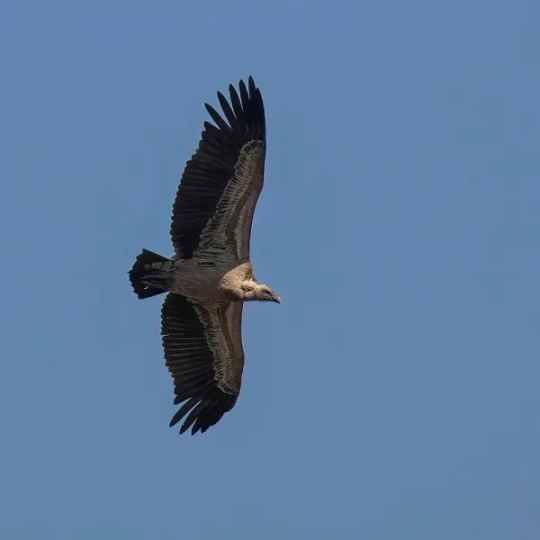
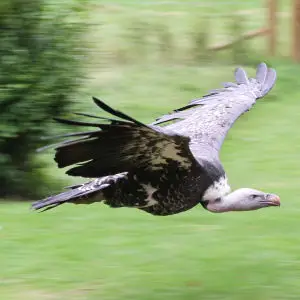

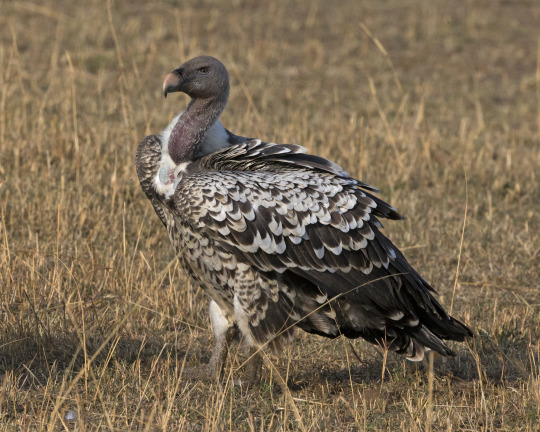
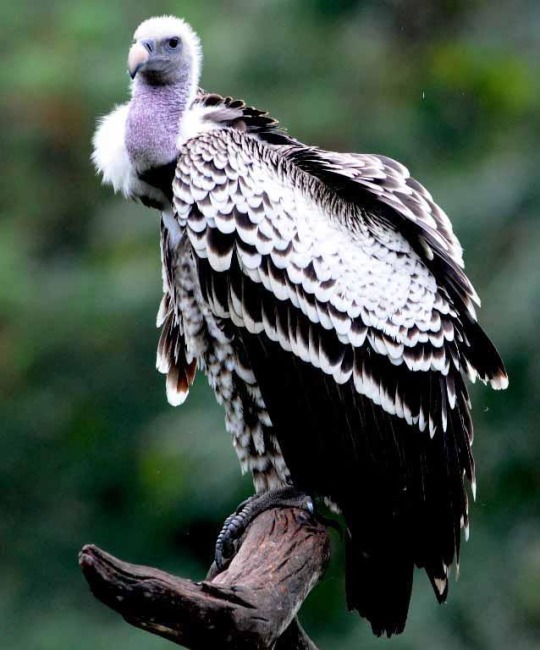
Rüppell's vulture also called Rüppell's griffon vulture, named after Eduard Rüppell, is a large bird of prey in the genus Gyps which is native throughout the sahel and eastern Africa including the countries of Algeria, Benin, Burkina Faso, Burundi, Cameroon, the Central African Republic, Chad, The Ivory Coast, Djibouti, Eritrea, Ethiopia, Gambia, Ghana, Guinea, Guinea-Bissau, Kenya, Mali, Mauritania, Niger, Nigeria, Rwanda, Senegal, Somalia, South Sudan, Sudan, Tanzania, Togo, and Uganda. Here they tend to inhabit grasslands, mountains, and open woodland. Rüppell's vultures are diurnal and very social birds, roosting, nesting, and feeding in large flocks. They spend much of their time flying at great altitudes, using strong winds and thermals to efficiently soar they are known to regular cruise at upwards of 20,000ft (6,000m) above the ground with some known to go as high as 37,000ft (11,300m) making them the highest flying bird. These vultures locate food by sight only, and often follow herds of animals. Once they find a carcass they swoop down, land a little way off, then bound forward with wings spread and their long neck outstretched. Even amongst old world vultures, Rüppell's vultures are specialized feeders with a spiked tongue and strong beak they can strip flesh with ease, and feed upon pelts, hides, and even the bones themselves. Reaching around 33 to 41in (85 -103cms) long, 14 – 20lbs in weight, with a 7.5-8.6ft (2.26 -2.6m) wingspan. They are one of the largest vultures in Africa, both sexes sport mottled brown or black feathering overall with a whitish-brown underbelly and thin, dirty-white fluff covering the head and neck. The base of the neck has a white collar, the eye is yellow or amber, the crop patch deep brown. The head does not have feathers. This species of vulture is considered to be monogamous, forming lifelong breeding pairs. They nest on cliffs in colonies up to a 1,000 strong. After courtship a pair will work together to build a nest using sticks, grass, and leaves that they have gathered or stolen from other nests, here the mother will lay 1 egg. Both parents share in incubation of their egg over a period of 55 days. Once the chick hatches, both parents will feed and tend to it for about 150 days when it fledges. Young remain dependent on their parents after fledging, not reaching independence until the next breeding season. Under ideal conditions a ruppells vulture may live up to 50 years.
#pleistocene#pleistocene pride#pliestocene pride#pliestocene#bird#dinosaur#vulture#ruppells vulture#africa#asia#europe#eurasia#flying#griffon#griffin#griffon vulture
448 notes
·
View notes
Text
Melanitta kirbori Zelenkov, 2024 (new species)

(Type coracoid [shoulder bone] of Melanitta kirbori, from Zelenkov, 2024)
Meaning of name: kirbori = for Kirill Borisovich Gerasimov [Russian zoologist who passed away in 2023]
Age: Pleistocene (Calabrian), about 1.8 million years ago
Where found: Taurida Cave, Crimea, Ukraine
How much is known: A nearly complete right coracoid (shoulder bone).
Notes: Melanitta is the genus of scoters, a group of stocky ducks in which the males are mostly colored black and have distinctive, "lumpy" bills. Although scoters tend to breed on freshwater ponds and lakes, they often spend the winter on coastal marine waters. They feed mainly by diving for clams and crustaceans.
M. kirbori is the oldest known scoter in the fossil record. It was similar in size and morphology to the extant surf scoter (M. perspicillata) of North America. It also resembles three larger extant species, the white-winged (M. deglandi), velvet (M. fusca), and Stejneger's (M. stejnegeri) scoters, which may suggest that these species evolved from smaller ancestors that were closer in size to M. kirbori.
Reference: Zelenkov, N.V. 2024. The oldest finds of the genera Melanitta, Marmaronetta, and other ducks (Aves: Anatidae) from the Lower Pleistocene of the Crimea. Paleontological Journal 58: 593–603. doi: 10.1134/S0031030124600653
47 notes
·
View notes
Photo
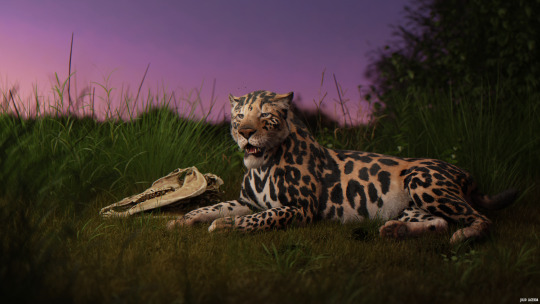
Megantereon
Patreon • Ko-fi • Facebook • Twitter • Prints & Merch
#palaeoblr#paleoart#megantereon#mammals#europe#africa#asia#pleistocene#cenozoic#tw:animal death#tw:bones
498 notes
·
View notes
Text
Ok, enough medieval/Roman/Scandinavian fantasy settings, I want a paleolithic fantasy setting. No metalworking, just spears and clubs and rocks. No castles, just caves and huts. Extinct megafauna instead of dragons. No elves or dwarves, but Neanderthals and Denisovans. You can still have Hobbits. Doesn’t have to be 100% accurate. Throw Erectus in there, fuck it, make up your own Homo species.
#fantasy#high fantasy#paleolithic#pre civilization#megafauna#paleontology#paleoanthropology#homo neanderthalensis#homo erectus#denisovans#pleistocene#it started as ‘I wanna explore this genre outside of medieval Europe’#and turned into ‘oooo all the different hominids!’#peregrine op
16 notes
·
View notes
Text



Cave Bear skull in Ialomita cave monastery, prayer place of Dracula's son.
#pleistocenemegafauna#pleistocene#cave bear#ice age#ialomita cave monastery#sibiu#romania#balkans#eastern europe#europe#ialomita church#cave#megafauna#mihneacelrau#dracula'sson
4 notes
·
View notes
Text
Me when I go to South America in the Miocene or the southern U.S in the Pliocene.
the bird that kills you
#did I delete my original post to make a better joke?#look don’t judge#also New Zealand before the 1400s works two#and Oligocene-Pleistocene Australia might work#so could Eocene North American and Europe#lots of birds that could easily kill you huh
2K notes
·
View notes
Text

We’re celebrating Saint Patrick’s Day in a big way, with one of the largest known deer: the Irish Elk (Megaloceros giganteus)! It was originally discovered in bog deposits in Ireland. This megafauna could weigh up to 1,500 pounds (680 kg) and its antlers could reach an incredible 13-ft- (4-m-) spread. Once ranging from western Europe to China, this animal died out some 10,000 years ago. However, at least one population, living in Russia’s Ural Mountains, managed to survive until about 7,770 years ago, long after the end of the Pleistocene.
See the Irish Elk up close in the Museum’s Hall of Advanced Mammals! We’re open daily from 10 am-5:30 pm. Plan your visit.
Photo: © AMNH
#science#amnh#museum#fossil#natural history#nature#paleontology#megafauna#did you know#fact of the day#fun fact#saint patricks day#st patricks day#luck of the irish#deer#mammals
2K notes
·
View notes
Text
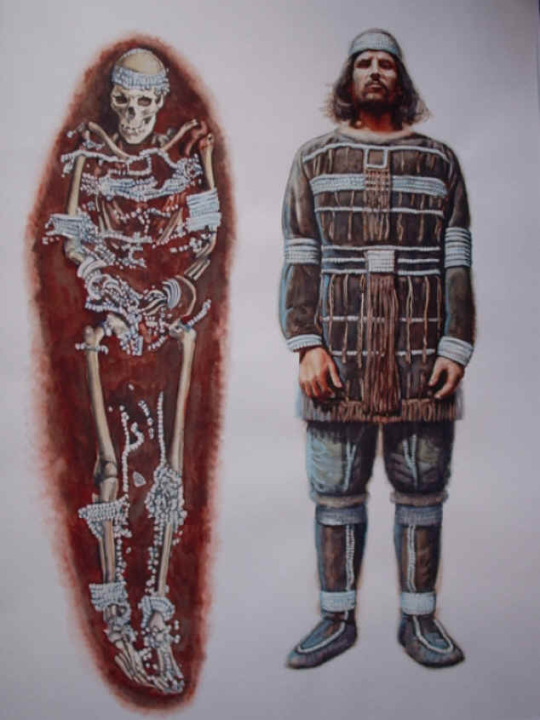
Disability in the Ice Age
People usually talk about the dawn of civilization in occuring around the Neolithic, like 12000 years to 6000 years before present, but people have been experimenting with different ways of organising society well back into the late pleistocene, or ice age (30,000 to 12,000 years BP). In ice age Europe and Russia, people would build villages out of mammoth bone and skin, which they would inhabit for a season then break up into hunter gather bands for another season.
A particularly interesting part of ice age culture is their burials. They normally didn't bury their dead, but they did sometimes. The burials are marked as being very rich, with lots of grave goods, including weapons, tools, or intricately carved beads on their clothes. (Pictured: A burial called the Gravetian Prince). Interestingly, most of the burials from this time period have disabilities evident in their skeletons. This has led to the theory that in ice age culture, disabled people may have held a shamanic or ritual significance (as they do in some contemporary hunter gather societies). Non physically disabled ice age burials could have had some disability that is not evident in the skeleton, such as autism or epilepsy. This really goes against the stereotype that disabled people in prehistory would not have been cared for and died young.
Sources: The Dawn of Everything, by David Graeber and David Wengrow. Gobekli Tepe Ancient History Documentry, by History Time.
#history#anthropology#ice age#disability#disability in prehistory#in the ice age i would have been a shaman
2K notes
·
View notes
Text

Dhole
The dhole (/doʊl/ dohl; Cuon alpinus) is a canid native to South, East and Southeast Asia. It is anatomically distinguished from members of the genus Canis in several aspects: its skull is convex rather than concave in profile, it lacks a third lower molar and the upper molars possess only a single cusp as opposed to between two and four. During the Pleistocene, the dhole ranged throughout Asia, with its range also extending into Europe (with a single record also reported from North America) but became restricted to its historical range 12,000–18,000 years ago. It is now extinct in Central Asia, parts of Southeast Asia, and possibly the Korean peninsula and Russia.
77 notes
·
View notes
Text


Strurni and Eira
3 notes
·
View notes
Text

Set of 2 paintings on canvas "Mountains of Europe in the Pleistocene Ice Age". A prehistoric diptych for your unique home decor. Wall gallery for aesthetic room decoration.
The animals depicted in the picture are woolly rhinoceros, elk, bison, lynx, capercaillie, crow, cave bear, Megaloceros giganteus, roe deer, wild horse. These paintings will help you in the design of a science gallery, a museum exhibition, an educational presentation, a science paper, and the publication of a science article in a magazine.
You can choose these images for your brand logo, product branding.
The paintings are presented in the store:
#Mountains of Europe#Pleistocene#Ice Age#Set of 2 paintings on canvas#prehistoric diptych#unique home decor#Wall gallery#aesthetic room decoration#animals picture#woolly rhinoceros#elk#bison#lynx#Irish elk#capercaillie#crow#cave bear#Megaloceros giganteus#roe deer#wild horse#design#science gallery#a museum exhibition#an educational presentation#a science paper#science publication#science article in a magazine#brand logo#product branding#homedecoration
1 note
·
View note
Text
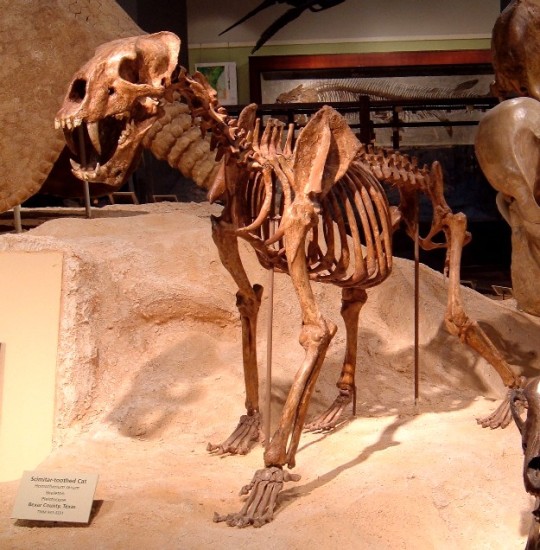
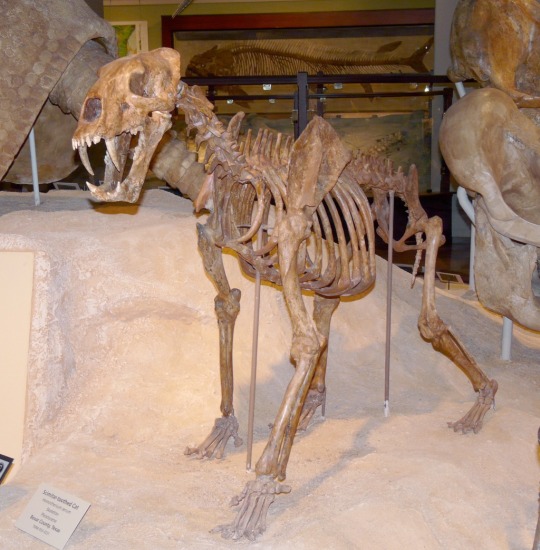

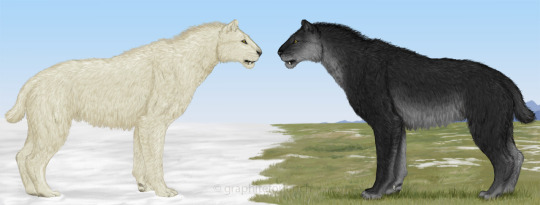

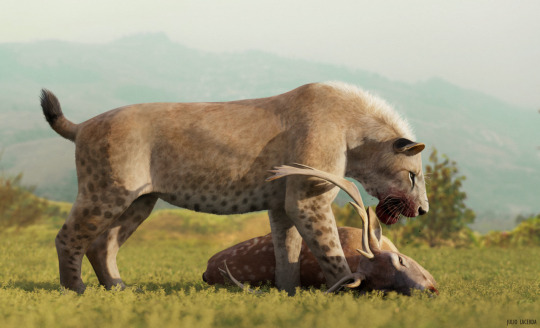


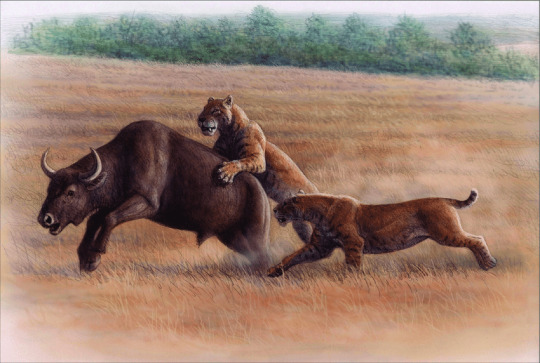

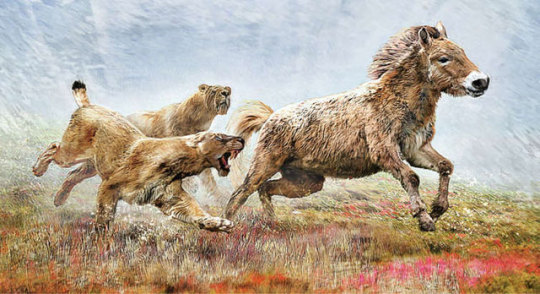
Happy Ice Age Week: Homotherium is an extinct genus of machairodontine scimitar-toothed cat that inhabited North America, South America, Eurasia, and Africa from the Pliocene to the Pleistocene epochs around 4 million to 12,000 years ago. Making them to be one of the most widespread of all felines throughout time second only to the domestic cat. The first fossils known to belong to homotherium consisting of a partial skeleton were described in 1846 by Richard Owen as the species Machairodus latidens. It wouldn’t be until 1890 after several addition specimens where recovered that one Emilio Fabrini would determine them to be a distinct genus which he dubbed Homotherium for the Greek homos meaning same and therion meaning beast. Over the next century and a half hundreds of specimens have been recovered representing over a dozen species including: H aethiopicum, H crenatidens, H crusafonti, H hadarensis, H idahoensis, H ischyrus, H johnstoni, H latidens, H nestianus, H nihowanensis, H sainzelli, H serum, H ultimum, and H venezuelensis. Reaching on average 3.5ft (1.1m) tall at the shoulder and 425lbs (190kg) in weight, homotherium was around the size of a male African lion. Homotherium had shorter upper canines than other machariodonts such as Smilodon or Megantereon, but these were still longer than those of extant cats. The incisors and lower canines of Homotherium formed a powerful puncturing and gripping device, and its jaws were adapted to clamp and hold prey while inflicting damage with the canine teeth. Homotherium is notable for its unusual shape and proportions, with a comparatively compact torso and long legs. They had thick necks, large shoulders, and a sloped back giving them a profile more akin to a hyena than other big cats. These adaptations mean that Homotherium was built for energy efficient travel, and may have used this advantage to wear prey down in a manner similar to how wolves will constantly harass a prey animal until it collapses from exhaustion. This anatomy coupled with findings of multiple homotherium individuals found to have died together, points to Homotherium being a well adapted diurnal social pursuit/ persistence predator.
Art utilized was made by the following creators
Scimitar Toothed Cat: Michael Westbury https://www.eurekalert.org/multimedia/583429
Homotherium: allotyrannosaurus https://www.deviantart.com/allotyrannosaurus/art/White-Homotherium-909661018
Homotherium: Mauricio Anton
Homotherium: Julio Lacerda https://paleoart.tumblr.com/post/629421596985196544/commission-for-a-client-homotherium-latidens-and
#pleistocene#pleistocene pride#pliestocene pride#pliestocene#ice age#cenozoic#ice age week#ice age europe week#homotherium#scimitar toothed cat#fossil#paleontology#mammal
58 notes
·
View notes
Text
Enkuria voinstvenskyi Zelenkov, 2024 (new genus and species)

(Type humerus [upper arm bone] of Enkuria voinstvenskyi, from Zelenkov, 2024)
Meaning of name: Enkuria = for E. N. Kurochkin [Russian paleontologist]; voinstvenskyi = for M. A. Voinstvensky [Soviet zoologist]
Age: Pleistocene (Calabrian), between 1.5–1.8 million years ago
Where found: Taurida Cave, Crimea, Ukraine
How much is known: Multiple limb bones. It is unknown whether any of these belonged to the same individuals.
Notes: Enkuria was a phasianid, a group that includes chickens, partridges, and turkeys. It appears to have been similar to extant partridges in the genus Perdix, such as the gray partridge (P. perdix). However, it was slightly larger, around the size of the extant rock partridge (Alectoris graeca).
The describer of Enkuria also assigned a second species to this genus, E. etuliensis. Formerly classified in the pheasant genus Phasianus, it is known from a coracoid (shoulder bone) from the Pliocene of Moldova, and was somewhat larger still than E. voinstvenskyi.
Reference: Zelenkov, N.V. 2024. Gray partridges (Phasianidae: genera Perdix and Enkuria gen. nov.) from the Early Pleistocene of Crimea and remarks on the evolution of the genus Perdix. Paleontological Journal 58: 335–352. doi: 10.1134/S0031030124700084
60 notes
·
View notes
Text
Clothing and Decoration

By Oguenther at German Wikipedia - Own work, Public Domain, https://commons.wikimedia.org/w/index.php?curid=15134201
Humans have been decorating themselves at least 100,000 years, perhaps as long as 300,000 years, beginning with ochre, a pigment that comes in shades from yellow to purple. Ochre was used for tools and to create pigments that decorated the skin, paint cave walls, and as part of burial rituals, even medicinally. The evidence we have are depictions of human figurines made of limestone and decorated with ochre.
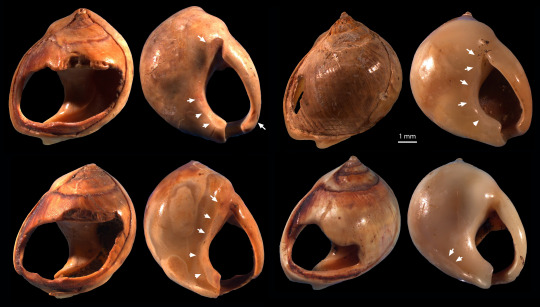
F. d’Errico [modified after d’Errico et al.
Beads of various materials, starting with shells and stones, spread widely with some speculating that trade of beads is what helped with the development of spoken language. It's even possible that beads go back as far as 500,000 years, to Homo erectus, though that is debated. Whether the beads were used in adornment or used as a type of currency or trade medium only is not known for sure, but beads are widely distributed and the materials show evidence of travel (for example, marine shell beads found in landlocked areas). It is thought, though, that wearing of beads came after decoration of the body with ochre.
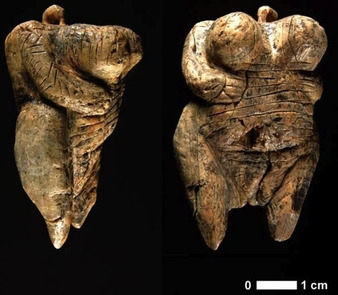
By http://www.nature.com/nature/videoarchive/prehistoricpinup/ image copyright H. Jensen / Universität Tübingen, Fair use, https://en.wikipedia.org/w/index.php?curid=22799118
The earliest depictions of clothing we have is around 41000 years ago, with the Venus of Hohle Fels, which was found in Sweden, though it is possible that the decorations on the body of the Venus figurine is ochre or tattoos. Interestingly, the oldest known musical instrument, a bone flute, was found near the Venus figure, indicating that fully behaviorally modern humans lived in the area.
Based on studies of head and body lice, humans began wearing clothing about 107,000 years ago. Part of the need for clothing was that this time was that this was during the start of the Last Glacial Maximum, when temperatures started dropping and glaciers began overtaking the northern latitudes. Humans, both Neanderthal and Homo Sapiens, had spread quite far by this time. Humans developed in the steppes of Africa and weren't well adapted to the cold, with no real body hair to hold in body heat.
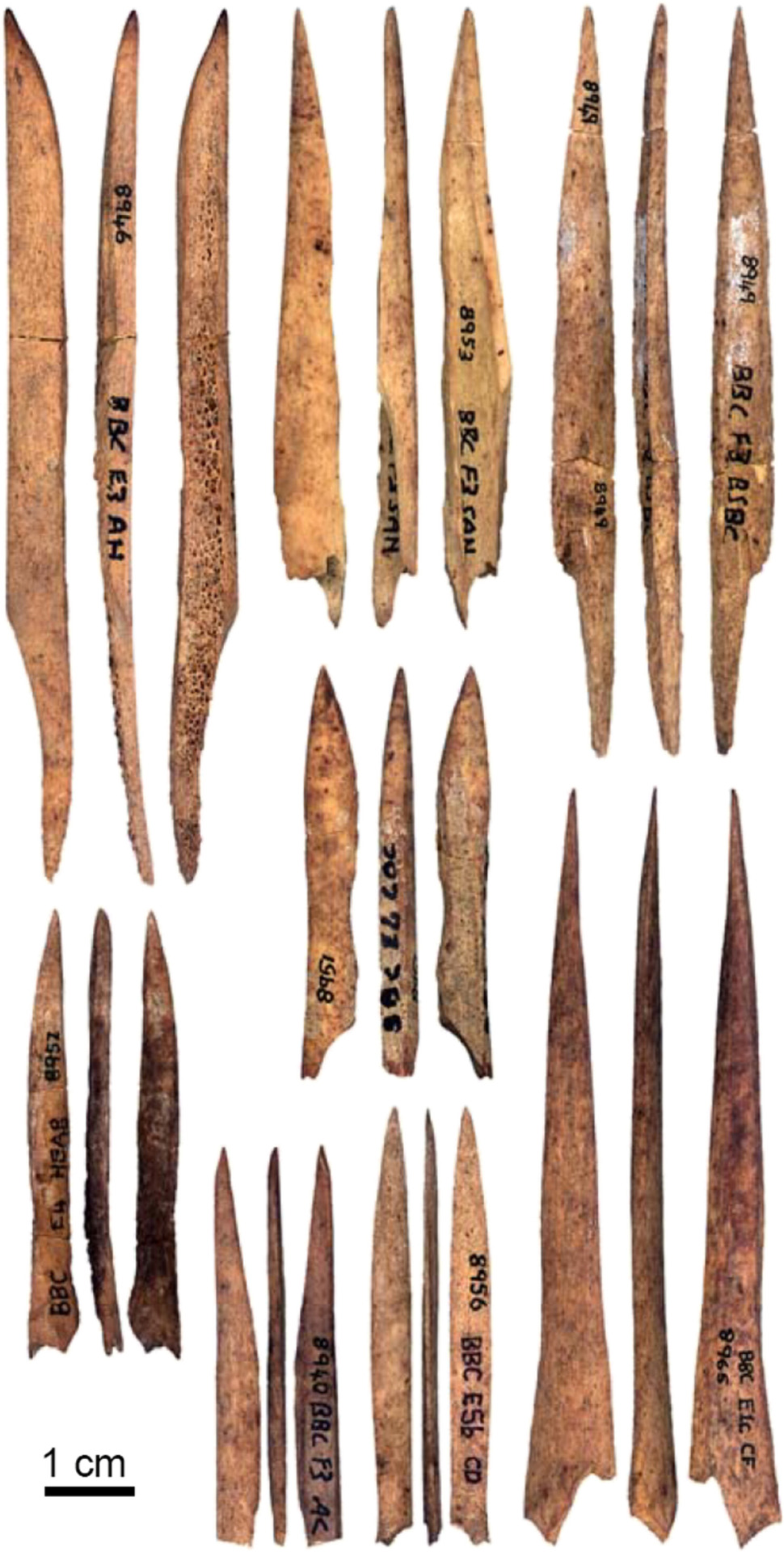

F. d’Errico.
Due to the organic nature of clothing, it's difficult to say for sure when exactly clothing began to be worn and what it was, but we are relatively certain that the first clothing was likely hides of animals. We have found stone and bone tools used to scrape hides from the Early and Middle Pleistocene. These tools also hold evidence that Ochre was used to color the hides. Awls, which were used in southern Africa approximately 73,000, years ago show that hides were pierced beginning very early. These awls show wear patterns of being used on soft, well-worked hides, though whether for clothing or bags, we can't know for sure. These awls spread to Europe by 45,000 years ago, though likely manufactured by Neanderthals based on the theorized distribution of various hominoid groups and remains in the locations they were found.
The benefit of using an awl to create holes in leather is that it can be shaped to the human body, making it more efficient at keeping the body warm, thus reducing the number of layers that need to be warn and allowing humans to spread further during the Last Glacial Maximum.
Approximately 40,000 years ago, in the Denisova Cave, at the time inhabited by modern humans, the first evidence of awls with eyes, or what we now know as needles, appear. This indicates that sewing together clothing, or the decoration of clothing, was becoming more common and more efficient. These needles spread widely, either through trade, contact, or independent development widely, even to the Americas and Australia. It is thought that this led to clothing being decorated more elaborately with beading and other forms of decoration.
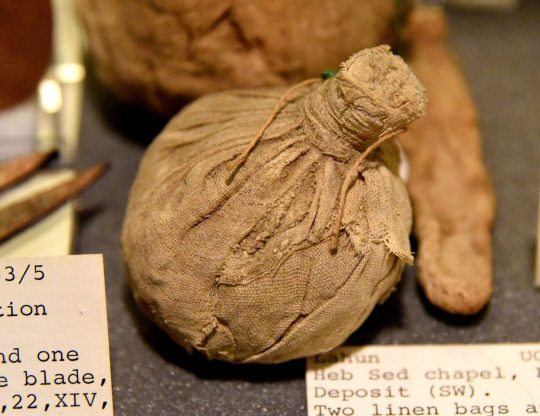
By Osama Shukir Muhammed Amin FRCP(Glasg) - Own work, CC BY-SA 4.0, https://commons.wikimedia.org/w/index.php?curid=56200885
While plant fibres don't generally fossilize, we do have some early evidence of people using them as early as 50,000 BCE, possibly used by Neanderthals, in southern France. There is are scattered imprints of cordage and net imprints in clay. As the planet warmed and the Holocene began, weaving of plant and animal fibres, depending on the local climate and availability. While weaving may have begun as early as 25,000 BCE, flax cultivation began around 8000 BCE, and the first evidence of weaving in 6000 BCE, used as a grave wrapping in Çatalhöyük. Approximately 3000 BCE, sheep were domesticated and bred for wooly fleece as opposed to hair in the Near East. In the Indus Valley, cotton was domesticated around 2500 BCE. Evidence of weaving beginning around 10,100 BCE have been found in the Americas, specifically Guitarreco Cave in Peru, where cotton and llama and alpaca were domesticated. Intricately dyed and woven silk was well developed as a craft as early as 2700 BCE, with the first silk reaching other places in the world nearly a thousand years earlier with the very first evidence of silk being used at all dating back to 8500 BCE.
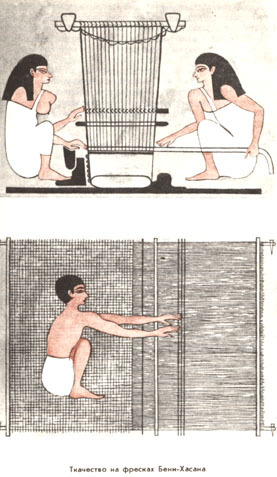
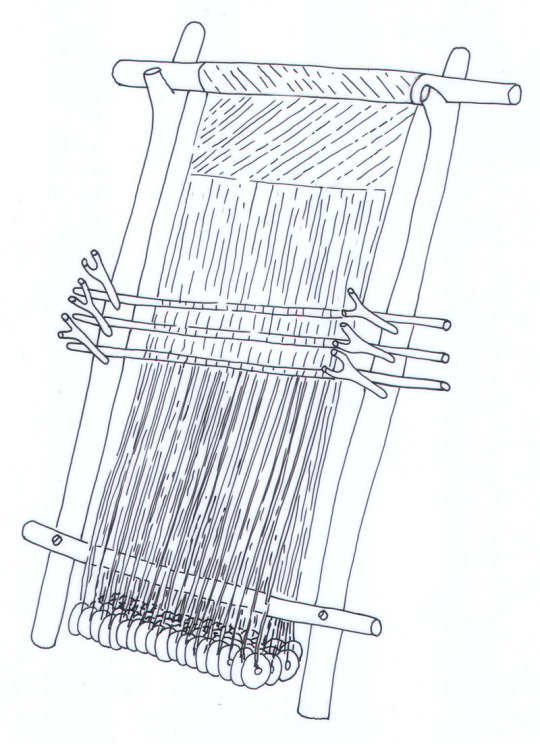
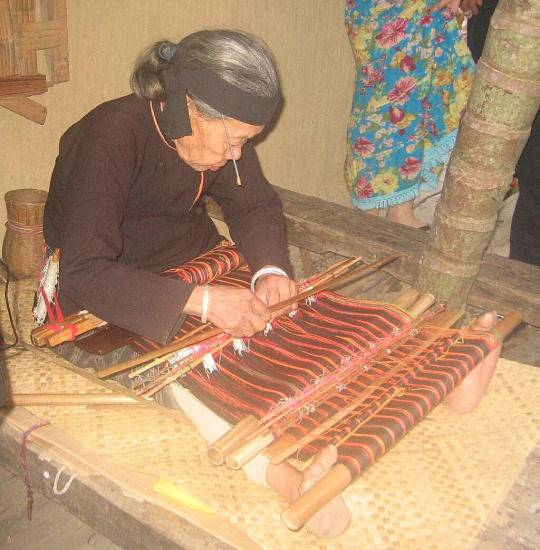
By Unknown author - http://www.booksite.ru/fulltext/nee/lov/tka/che/stvo/1.htm#1, Public Domain, https://commons.wikimedia.org/w/index.php?curid=7483824 By Annika Jeppsson og Danmarks Grundforskningsfonds Center for Tekstilforskning (CTR), Københavns Universitet, Attribution, https://commons.wikimedia.org/w/index.php?curid=33188674 By Zhou Guanhuai - Own work, CC BY-SA 4.0, https://commons.wikimedia.org/w/index.php?curid=142167208
It seems that civilizations may have developed weaving independently, so the first type of loom is difficult to figure out as some locations show that floor looms were first, while others show evidence of hanging looms, and yet others, it seems that what is now known as a 'back-strap loom' was first, while other locations show the use of a floor loom first. Given that these objects were made mostly of organic matter, the evidence comes from art, loom weights (stone or clay weights used to keep the warp threads taut while the loom was in use. Egyptian art shows the use of floor looms, Grecian urns show the use of warp-weighted looms, many native cultures used back-strap looms prior to European contact and colonization. From what fabrics that have been found, each culture developed its own method of creating decorated fabric, either through the application of decorations or through the weaving of the fabric itself, as well as multiple weights of cloth, from fine gauze through thick rugs out of nearly any plant or animal material that could be twisted into yarn.
#body decoration#weaving#sewing#leather work#floor loom#warp weight loom#back-strap loom#fabric#human history#human development
66 notes
·
View notes